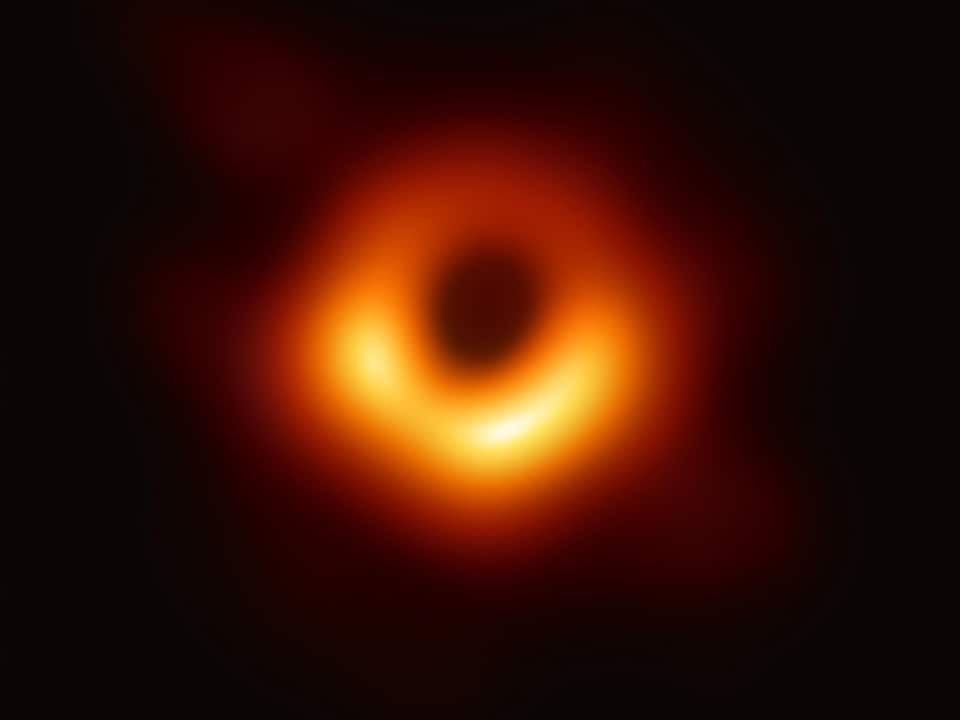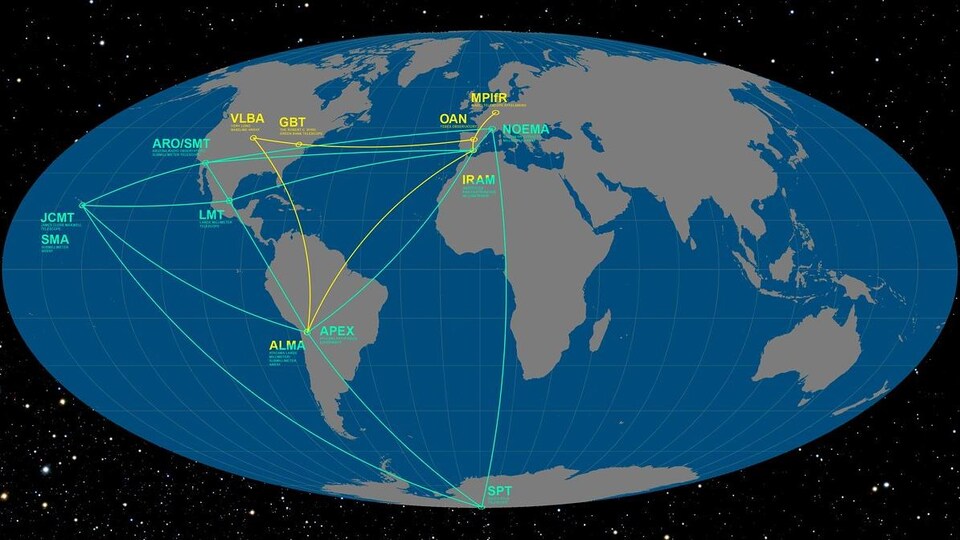The very first image of Sagittarius A*, the massive black hole in the middle of the Milky Way, was made public at several press events held around the world by institutions associated with the EHT (Event Horizon Telescope) initiative. ), including the European Southern Observatory (ESO) and the Harvard-Smithsonian Center for Astrophysics.
As early as 1974, astrophysicists found a compact and brilliant radio source in the center of the Milky Way. In the 1990s, however, that this source was associated with the existence of a massive black hole, the regions of the galaxy where the gravitational field is so intense that it prevents any form of matter or radiation. to escape here.
But how to confirm the presence and create an image of a celestial object that does not emit light? This is the work that has focused the attention of 350 astrophysicists associated with EHT since the first observation campaign conducted in 2017 using eight terrestrial telescopes located around the world and that constitutes the virtual equivalent of a radio telescope several thousand kilometers away. width.
The goal of these scientists was to describe the silhouette of a black hole caused by the curvature of light subject to the intense gravity of the celestial object. The first results were announced in 2019. At that time, the image of the black hole in the center of the galaxy Messier 87, about 55.3 million light years from Earth, was shown.
In comparison, Sagittarius A* (Sgr A*) is in only 27,000 light years from our planet. Sgr A* is 100 times closer to our planet than any other massive black hole.
Its relative proximity has not made it easier to observe. The presence of interstellar dust and gas, several million stars and visible light from Earth makes it difficult for the central region of the galaxy to contemplate. We must also consider the fact that we are inside the galaxy. It’s always a challenge to keep an eye on things when you’re yourself inside things.explanation by astrophysicist Olivier Hernandez, director of the Rio Tinto Alcan Planetarium.
The silhouette of Sgr A*
The image obtained by astrophysicists therefore corresponds to the outline of Sgr A*, the so -called event horizon. This region marks the immaterial limit of penetration into the black hole. What we see is the accretion disk, i.e., the gas that heats up and begins to fall towards the black hole.said Olivier Hernandez.
The radius of the event horizon corresponding to this mass would be about 6 million kilometers, or approximately 15 times the Earth-Moon distance.
This plot of the black hole is considered one of the most violent places in the universe, and the point of no return where everything – i.e., stars, planets, gas, dust and all forms of electromagnetic radiation , including light, is irreversible to suck. show.
Sgr A* is not the only black hole in the Milky Way. There are dozens of stellar black holes. The latter are formed during the gravitational collapse of large stars at the end of their lives exploding as supernovae. So far, 20 such black holes have been confirmed in our galaxy.
A mystery that remains
Despite this important galactic victory, black holes remain very mysterious celestial objects. Where does the thing they absorb goes? How to define their gravitational singularity? What’s on the other side?
There are so many unanswered questions that science may continue to focus on for years to come.
Since the first series of observations conducted in 2017, three observatories have been added to the EHT network and others will join in the coming years.
Source: Radio-Canada

